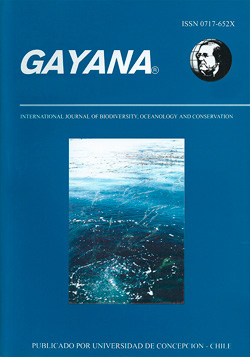Conservation in the city: How does habitat structure influence the abundance of individual bird species in a Latin American metropolis?
Keywords:
avifauna, biodiversity hotspot, Santiago of Chile, urban ecosystems, woody vegetationAbstract
A paucity of ecological research in urban ecosystems in Latin America limits the management of urban areas for biodiversity conservation. In addition, the majority of previous ecological studies in cities have focused on parks, ignoring most part of urban ecosystems. To provide robust scientific evidence for the management of urban areas for bird conservation, we investigate the influence of habitat variables on the abundance of native and exotic bird species in Santiago, Chile. During the reproductive season of 2017-2018, we surveyed birds and habitat variables at 455 points distributed throughout the city. We fit generalized linear models to evaluate the influence of habitat variables on individual bird species abundance. In 905 bird counts, we recorded 35 bird species (31 native and 4 exotic). The abundance of©2019 The author(s). Gayana ©2019 Universidad de Concepción. This open access article is distributed under the terms of the Creative Commons Attribution-NonCommercial native birds (Zenaida auriculata, Elaenia albiceps, Troglodytes aedon, Turdus falcklandii, Zonotrichia capensis and Molothrus bonariensis) increased with woody vegetation cover. Points with greater shrub cover in the microhabitat exhibited a greater abundance of T. falcklandii, Z. capensis and E. albiceps. In contrast to the response of native birds, the abundance of exotic species (Columba livia and Passer domesticus) decreased with vegetation cover. Our results demonstrate the importance of woody vegetation to conserve native bird species in Santiago. Management of habitat that (1) avoids the loss of woody vegetation and (2) aims to increase trees and shrubs in urban areas with low vegetation cover will promote a greater abundance of native birds.




